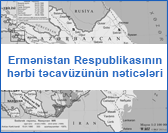Copyright in Azerbaijan – background
Copyright in Azerbaijan – background
Copyright in Azerbaijan goes back a long way – to the time when named authors replaced their anonymous predecessors. The “Book of my Grandfather Korkoud” exemplifies the change: the 1300th anniversary of its appearance was recently celebrated, although some experts believe that the story Korkoud tells dates back to the first centuries of the current era.
It was around this time that works which were not mere anonymous folk-tales, but bore their authors’ names, first started to appear. The ashugs (poet-singers, who improvised on traditional epic themes) in medieval Azerbaijan found an effective way of proclaiming their authorship, and this became current throughout the region. They did this by including their own name in the last verse of the poem/song (tapshirma) – an early, but effective, way of protecting what we now call personal rights.
The copying and changing of tapshirmas were governed by adat (customary law), and plagiarists exposed themselves to public contempt.
Today, authors and artists live on their rights – at an earlier stage, they lived on their patrons. Just as Vergil, Horace and Martial were supported by their patrons, so the great Azerbaijani architect, Adjemi Nakhichevanli, worked for the Atabeks of Azerbaijan and with their support. In the same way, the scientist-philosopher, Seyid-Yakhya Bakouvi, and the poets, Khagani and Feleki, lived on the bounty of the Azerbaijani Shirvanshakhs. The great Nizami, too, was specially rewarded by the ruler, Kizil-Arslan, for his poem “Khosrov and Shirin”.
As everyone knows, the origins of modern copyright are normally traced to Gutenberg’s invention of printing.
The active contacts maintained by the Azerbaijani states, Ak-koyounlou and Sephevi, with the countries of Western Europe, and particularly the Venetian Republic, led to the appearance of the first printed book by an Azerbaijani author, which was produced in Rome by the Medici press in 1594. This was Nasreddin Tusi’s “Takhriri-Oglidis”, a geometry and algebra manual which had existed in manuscript since 1248, and remained the standard work in the countries of Asia and eastern Europe until the nineteenth century. It was later published in 1657 (when a Latin translation also appeared in London), and was used as a school textbook until modern times.
From the 17th century on, as printing developed, copyright in the modern sense came to be recognized in Azerbaijan, and was governed by customary law.
This, briefly, is how copyright came to Azerbaijan, and the country’s rich literary tradition helped it to take root. Of course, copyright in Azerbaijan today also bears the mark of the Roman and Anglo-Saxon legal traditions, and the lessons learned from WIPO and the developed countries. As the French writer, Chateaubriand, put it: “a right did not create a duty, but a duty created a right”. The debt which Azerbaijan owes its scholars, writers and cultural workers has crystallized in copyright, as we know it today.
K.Imanov, 2005



















